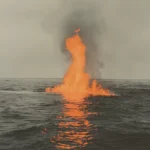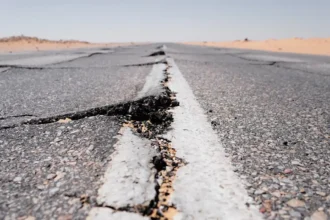Underwater Volcano Near Oregon Ready to Erupt
Have you ever wondered what happens when a volcano erupts deep under the ocean? Scientists are now watching closely as an underwater mountain called Axial Seamount shows clear signs of waking up. According to DailyMail, this massive volcano sitting 300 miles off Oregon’s coast is predicted to erupt “any day now” between July 2024 and the end of 2025.
What is Axial Seamount?
This hidden giant sits along the Juan de Fuca Ridge between Oregon and Alaska, buried nearly 5,000 feet below the ocean surface. The volcano is part of the most active volcanic system in the Pacific Northwest. When magma builds up beneath the seafloor, it pushes the ground upward in what scientists call “seafloor inflation.”
William Wilcock, a marine geophysicist at the University of Washington, explains that “some researchers have hypothesized that the amount of inflation can predict when the volcano will erupt.” The volcano has a regular eruption pattern that scientists have tracked:
- The 1998 eruption was the first one scientists could study closely
- In 2011, it showed a similar pattern of ground swelling before erupting
- The 2015 event helped scientists develop better prediction methods
Signs of an Upcoming Eruption
How do scientists know an eruption is coming? They measure the ocean floor and watch for specific changes. The Ocean Observatories Initiative reported that the seafloor has rebounded to 95% of its pre-2015 eruption height.
Scientists use special tools to track these important changes:
- Bottom-pressure sensors that work like scales, measuring tiny upward movements of the seafloor
- Earthquake detectors that count the hundreds of small quakes happening daily around the volcano
- Precise measurement tools that track the inflation rate, which has reached 13.5 cm per year
What Happens When It Erupts?
Mike Poland, a scientist at the Yellowstone Volcano Observatory, says: “When Axial Seamount erupts, it’ll look a lot like a Hawaiian lava flow eruption.” Think of hot, glowing lava spreading across the seafloor like slow-moving honey.
You don’t need to worry about safety, though. The volcano is too deep and far from land to cause any danger to people. Instead, this eruption offers a rare chance for scientists to study how underwater volcanoes work.
William Chadwick, a geophysicist from Oregon State University, and his team will use advanced underwater observatories to watch the eruption happen in real time.
Looking Forward
As you go about your daily life on land, remember that deep beneath the Pacific Ocean, a massive natural event is preparing to unfold. The underwater fireworks will help scientists better understand our planet’s most powerful forces. Will the volcano follow its predicted schedule? Scientists are watching closely, and now, so are you.











